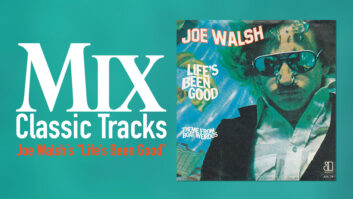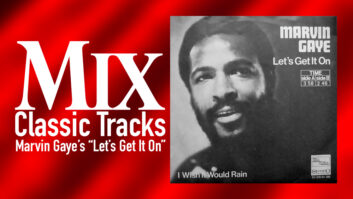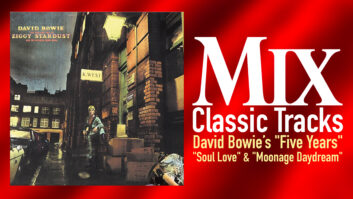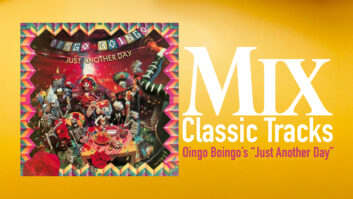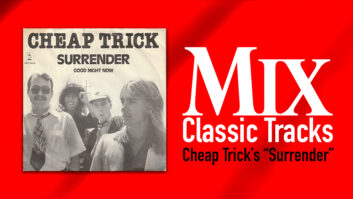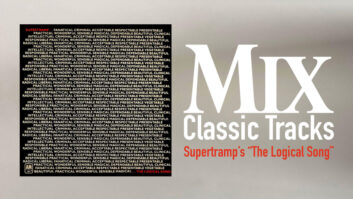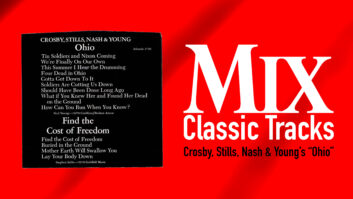
Bruce Springsteen’s impressive career was launched with GreetingsFrom Asbury Park in 1973. He was signed based on demos supervised bythe legendary John Hammond Sr. Two years and two albums later, Born ToRun made the Freehold, N.J., native a household name, and by 1984, Bornin the U.S.A. had made him a mega-star. But a dozen or so albums overmore than 25 years of recording barely scratch the surface of thisprolific artist’s career. When recording studio albums, he would oftenignore all the songs he’d been working on between records, and he’sfamous for recording more songs than he needed for many of his albums:For example, for Born in the U.S.A. about 60 tracks were recorded intotal; on Human Touch in 1992, around 40 songs went into the can.
The Springsteen canon is massive, so it’s no surprise that theretrospective undertaken by Springsteen and his team in early 1998-afour-disc collection called Bruce Springsteen: Tracks, released inNovember-was an archival endeavor of Homeric proportions. Tracks offersmany songs no one but Springsteen and his inner circle have ever heardbefore. Aside from those rarities are treats such as the four-song demothat John Hammond produced for Springsteen’s Columbia signing andseveral B sides of singles, such as “Pink Cadillac,” which was slatedto appear on Born in the U.S.A. but which wound up being relegated tothe flip side of the “Dancin’ in the Dark” single instead.
“We knew that this was going to be quite an undertaking,” recallsToby Scott, who has worked as an engineer for Springsteen for the pasttwo decades. Scott was Chuck Plotkin’s engineer at the producer’sstudio, Clover, in Los Angles in 1978 when Plotkin was called in tofinish mixes for Darkness on the Edge of Town. Over time, Springsteencame to rely more and more on Scott, both in the studio and forrecording live performances, and Scott has handled nearly all ofSpringsteen’s recording work since 1980. But one of Scott’s greatestcontributions is a computerized database that he began working on in1985; Scott created it in order to help Springsteen find specific songsin his rapidly growing treasury of demos, outtakes and songs thatdidn’t make it onto albums, so Springsteen could keep rotating theminto his ever-changing live sets.
“In February [1998], Bruce had been recording material for a newalbum, and in the middle of it he just stopped and said, ‘Let’s do theboxed set,'” recalls Scott, who began the project working from his homein Whitefish, Montana. “That’s what we had always referred to thisproject as. We knew since the 1980s that he would do it at some point.”Springsteen gave Scott a list of more than a hundred songs, and Scottbegan researching them in the catalog. Most of the material was inrough-mix form, and for a time the creative crew of Springsteen,Plotkin and manager Jon Landau considered releasing those mixes, evendoing a tentative initial mastering session to see what they wouldsound like. But a listening session in June among the three produced adecision-prompted mainly by Landau-to do remixes from the originalmasters.
Meanwhile, Sony Music had been alerted that the project was underway, and the record company’s corporate machine ground into gear,creating its own timetable and setting a September deadline for mastersubmission. “We didn’t even have a final list of songs for the projectin June, and here we were facing a three-month deadline in which wewere going to have to find, remix and master dozens of songs,” recallsScott. “It was almost overwhelming.”
Almost. But the database project Scott had started and maintainedhelped enormously in locating the desired multitrack reels. These weresent to Springsteen’s South Jersey estate, a working farm with severaladditional buildings on the property, one of which-a 185-year-oldfarmhouse-is his personal recording studio (profiled in Mix in June’96). Scott had first put Springsteen’s home recording setup togetherback in 1982, when the artist was working on Born in the U.S.A. andrecording new songs to cassette. Springsteen had become enamored of thestark tonal quality he could achieve with an acoustic guitar and acassette, and that experience eventually contributed to Nebraska. Butas Springsteen seemed to increasingly enjoy working outside theconventional studio setting, Scott offered to put together a moresophisticated recording operation for him. Initially, it was an 8-trackMCI recorder and a 16-input Trident Trimix console, which would mixdown to the early digital F-1 format, which essentially was little morethan a stereo A-D converter and a VHS VCR. “It was awkward, but it wasdigital and 16-bit, either 44.1 kHz or 48 kHz,” says Scott. “He didover a dozen songs on that format, and two wound up on the boxed set.He really needed a home studio back then, if only so we didn’t end upmastering cassettes for the rest of his career.”
Beginning in late June of last year, Scott organized how to get thesongs for the boxed set (which had grown to 128 in number) located andremixed if necessary in the increasingly short window ahead of them.The solution was to turn the farmhouse into a recording complex. Bythis time, the home studio had been considerably updated-after going to24-track analog (another MCI machine, an expanded Trident; later a62-input Amek Angela and the first of what would be two of the earlySony 3324 digital multitracks), it now features a 96-input EuphonixCS2000 console and a pair of Sony 3348 digital multitracks, withmixdown mainly to DAT. Over the years, as he updated the database ofrecordings, Scott’s thoroughness extended to having original masterstransferred to digital multitrack formats, and this helped considerablywhen the boxed set project began-by then most of the masters werealready transferred to digital. The Euphonix room was dubbed Studio A.Next, it was arranged for Kooster McAllister’s Record Plant Remotetruck to come to the estate, where it would act as Studio B, parkedacross the driveway from the farmhouse. Finally, longtime Springsteenmixer Bob Clearmountain came onboard. Because of scheduling conflicts,he worked from his SSL-equipped home studio in Los Angeles, and Scottarranged for ISDN lines and an EDNet digital conversion system to belinked to the New Jersey site. Engineer Ed Thacker was brought in to domixes on the Euphonix, and Thom Panunzio, who was an assistant engineerfor producer/engineer Jimmy Iovine on Born To Run at the old RecordPlant Studios in Manhattan, was hired to mix from the Record Planttruck.
“We realized that there was no way to meet the deadline of September10 if we just used one studio to remix all of this,” Scott says. “Themath just didn’t work. And there were scheduling issues to deal withwhen you have more than one mixer. Ed was available from July throughSeptember; Bob was booked almost through August; Thom had time in theend of July and all of August. So we had to have multiple studiosworking and multiple mixers mixing at the same time, if necessary.”
Through early August, Scott was coordinating virtually all of thisby phone, awaiting the birth of his first child in Whitefish. He hiredengineer Greg Goldman, whom he had worked with before, to act as hiseyes and ears on the ground in New Jersey. All the mixers shared YamahaNS-10 monitoring in common-Springsteen’s own favorite studiospeaker-coupled with dB Technologies A-D converters (Clearmountain usedApogee converters). This gave an element of consistency to the project,which would cover 26 years’ worth of Springsteen recordings andencompass a broad array of recording formats and technology.
Artistically, Plotkin assigned songs from various eras ofSpringsteen’s career among the three engineers chronologically. “Theearlier stuff went to Thom, because he was actually around for some ofit,” Scott explains. Thacker was also given some of that material, aswell as a lot of the middle period Springsteen. Clearmountain remixedlater pieces, from the Human Touch era forward. “As a result, there wasenough material so that most of the time the mixers weren’t crossingover between eras,” Scott says. “For instance, CD three is all Thackerand CD four is all Clearmountain. And the material itself has so muchinternal variation between periods that there really isn’t aconsistency issue in most of it. It stands alone. Besides, we’ve allheard a few Bruce Springsteen mixes before.”
Thacker’s connection to Springsteen was peripheral until he wascalled for this project. He had been friends with Plotkin for years andhad been working in recent years on music projects with E Street Bandkeyboardist Roy Bittan. However, that, combined with a highly evolvedworking knowledge of the Euphonix console, made him a good choice forStudio A, says Scott. From Thacker’s point of view, the experience wasmuch more than simply a gig. “Bruce’s records had been a big influenceon me as an engineer in terms of their power and content,” he observes.”The interesting thing about them is that they’re not as guitar-drivenas you might remember them. Once I opened up the tapes I realized thatthe guitars are more like the foundation of the rhythm and thekeyboards have these little interlocking melodies that really give youthe hook.” After mixing 38 of the 66 songs in the boxed set, Thackerfound, too, that Springsteen had changed his attitude toward reverb.”We all recall his vocals as being very big and sitting in the tracksurrounded by reverb,” he says. “But in several instances he asked meto make the vocals drier than they might have been 20 years ago; makethem a little more personal. We weren’t trying to re-create the pastwith this project; the songs and the music do that themselves.”
A typical day in August, when all three engineers were workingsimultaneously on mixes, was both complex and cacophonous. Panunzio andThacker would generally set up a mix during the evenings, returning thenext morning to complete it. Springsteen would call in during theafternoons and show up between 4 p.m. and 7 p.m. to listen to mixes andmake any suggested changes. Plotkin was also present, adding hisinput.
Meanwhile, Clearmountain was doing the same, but with a three-hourtime difference, with his mixes being played back in real time overNS-10s in the living room at Springsteen’s recording compound. By then,Scott’s wife had delivered and he was back on-site and, along withassistant engineer Ross Petersen (who was also assisting Thacker inStudio A), using the mornings to handle any maintenance tasks that hadcropped up overnight. “It got so you could hear music coming from allover the place,” Scott recalls of those bustling dog days of summer.”It was an old building, and you could hear everyone’s mixes comingthrough the walls around you.” It was a beehive-like production linethat was creating what would eventually become 66 songs for Tracks inless than 90 days.
Thom Panunzio had specified the Record Plant Remote truck, which ranon an external generator for the first few weeks until KoosterMcAllister found a 240-volt source in the greenhouse attached to thefarmhouse. But inside, it could have been the Record Plant inManhattan, circa 1975, with McAllister’s discrete API console and theclassic outboard complement that included Pultec EQP-1As, Fairchild670s and LA-2As. “Some of this stuff had originally been recorded 20years ago, and they wanted to re-create that effect for this mix,”McAllister says. There was an occasional overdub, as well. “In a lot ofcases, Bruce had started a song and then moved on to the next one, sosome of them needed a guitar part or a tambourine or a harmony,” herecalls. “Bruce just stood in the back of the truck and did it. Usuallyin one take.”
For Panunzio, who had assisted engineer/producer Jimmy Iovine onDarkness on the Edge of Town at the original Record Plant, it was atime trip. “It was a flashback to open up the tapes and hear me andJimmy talking over the talkback. When you think about it, there’s noother artist who could have had so many great songs not make it ontotheir records in the first place.”
At the same time, Scott had rented (and learned to operate) a SonicSolutions workstation, chosen because it was the same platform thatmastering engineer Bob Ludwig would use for the finished productions.Scott loaded the final remixes into the Sonic’s hard drives. Heassembled them in sequence and according to which disc they wouldreside on for the final boxed set, setting spacings and doingcrossfades and other editing tasks. “That would make the masteringstage go that much faster,” he says. “And once we had material to fillone of the CDs, that would give us all a chance to reevaluate itartistically in sequence.”
Mastering was completed in a week, from hard drives sent to GatewayMastering in Portland, Maine. Scott, Plotkin and Springsteen cappedthat process off with three days of listening there, making finaltweaks to the four-disc set before sending it off for replication.Onschedule.
Scott credits everyone who worked on the complex project ascontributing to its on-time completion, from the technical aspects tothe artistic wrestling that went into choosing which songs would appearon this career-defining showcase. But the project also had one othertangential accomplishment that seemed to particularly gratify Scott’sorderly proclivities: Sony Music has recently created its own archivedatabase, and in doing so has made extensive use of Scott’s catalogingefforts over the last decade. “Now I can just call up Sony and getwhatever Bruce Springsteen song I need,” he says. Which will be veryhelpful for Tracks II, if it ever happens.
